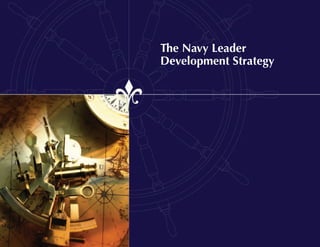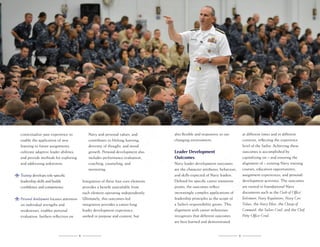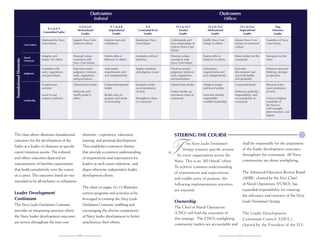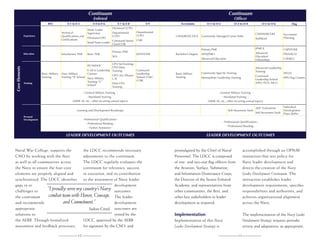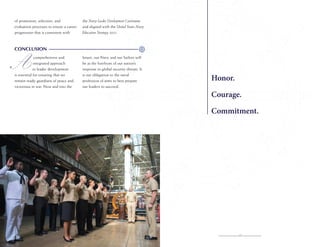This document outlines a strategy for developing Navy leaders. It establishes a framework for leader development that integrates professional experience, training, education, and personal development through career milestones. The goal is to produce fully prepared leaders by defining leadership outcomes and aligning existing programs. It calls for increased commitment to prioritizing leader development to match the complex demands on Sailors. All Navy communities and organizations must work together to execute this strategy.
